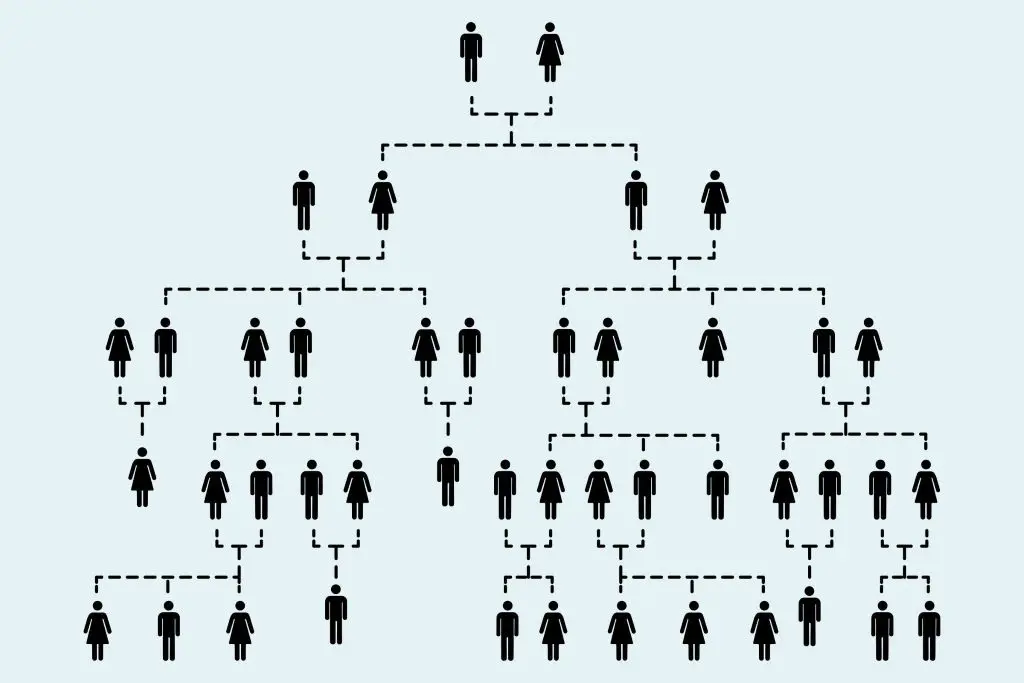First Cousin Once Removed Are Separated By A Generation
First cousin once removed meaning is the relationship you have with the child of your cousin. The term suggests that you are still cousins but separated by a generation.
In normal families, the first cousin once removed is rarely used to describe a relationship.
Instead, people generally refer to the children of their first cousins as nieces and nephews. And, in return, they will address you as an uncle or aunt.
Similarly, the term can also be used to describe the relationship you have with the parents of your second cousin. Usually, they are referred to as your uncles and aunts, while you'd be their niece or nephew.

First Cousin Once Removed Vs Second Cousin
First cousin once removed relationship is not the same as the second cousin. The term "once removed" implies being separated by a generation.
First cousin once removed is a term referred to the child of your first cousin, whereas second cousin refers to a relative with the same great-grandparents.
Similarly, the first cousin once removed also includes the parents of your second cousins. It might be a little confusing at first, but if you were to properly analyze it, you'll find sound logic behind it.
The parents of your second cousins are the first cousins of your parents. And, the child of your first cousin is the first cousin once removed. So, in a way, you're their first cousin once removed.
Here, are a few important relationships you may not be aware of the titles.
- Your second cousins' children are your second cousins once removed.
- Your second cousins' grandchildren are your second cousins twice removed, and so on.
- Your third cousins' children are your third cousins' once removed.
- Your third cousins' grandchildren are your third cousins' twice removed, and so.
- Your third cousins' parents are your second cousins once removed. Similarly, your third cousins' grandparents are your first cousins twice removed.
Here is a chart to determine your relationship with multi-generational relatives.
Also Read: Double First Cousins Meaning Explained Through Whitaker Family Tree
First Cousin Twice Removed Meaning
First cousin twice removed implies that there is a difference of two generations between cousins.
This term is used to refer to the grandchild of a first cousin. Similarly, it is also used to identify the grandparents of your third cousins.
As you may have noticed by now, your parents are the first cousins once removed to the grandparents of your third cousin. So, you have the same relationship with them as the grandchildren of your first cousins have with you.
Scientists believe that first cousins once removed have between 220 to 680 centimorgans of common DNA. Similarly, first cousins twice removed share about 107 to 426 centimorgans. Centimorgan is a unit for measuring the genetic recombination frequency.
Are Second Cousins Blood Related?
Yes, second cousins are blood-related because they share a common ancestor. They have a common great-grandparent.
As per research, second cousins share around 2% to 6% of DNA between them with average DNA shared at about 3.13%. This number goes further down between second cousins once removed who only have about 1.5% of similar DNA.
Similarly, the DNA match between first cousins is about 12.5% on average, whereas the average DNA shared between first cousins once removed is about 6.25%.
In most cultures, second cousins are considered family members and not distant relatives. Despite the close relationship and genetics, marriage between second cousins is legal in the US and many other parts of the world.
On the other hand, marriage between first cousins is illegal in 24 US states. Meanwhile, 19 states have not prohibited marriage between first cousins, while seven states allow some marriages between them. Likewise, marriage between the first cousins once removed is also banned in six US states.





